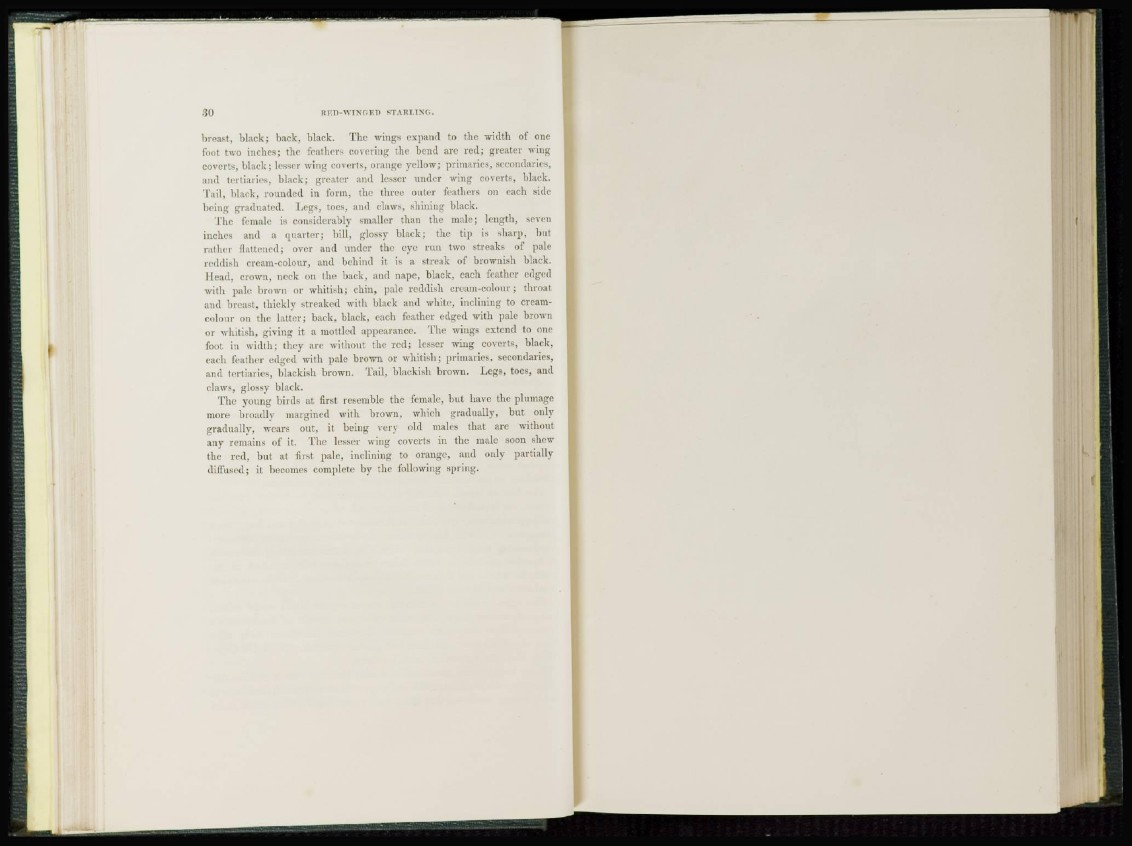
80 R.ETi-WIN'GED STARTING.
breast, black; back, black. The wings expand to the width of one
foot two inches; the feathers covering the bend are red; greater wing
coverts, black; lesser wing coverts, orange yellow; primaries, secondaries,
and tertiai ies, black; greater and lesser under wing coverts, black.
Tail, black, rounded in form, the three outer feathers on each side
being graduated. Legs, toes, and claws, shining black.
The female is considerably smaller than the male; length, seven
inches and a quarter; bill, glossy black; the tip is sharp, but
rather flattened; over and under the eye run two streaks of pale
reddish cream-colour, and behind it, is a streak of brownish black.
Head, crown, neck on the back, and nape, black, each feather edged
with pale brown or whitish; chin, pale reddish cream-colour; throat
anil breast, thickly streaked with black and white, inclining to creamcolour
on the latter; back, black, each feather edged with pale brown
or whitish, giving it a mottled appearance. The wings extend to one
foot in width; they are without the red; lesser wing coverts, black,
each feather edged with pale brown or whitish; primaries, secondaries,
and tertiarics, blackish brown. Tail, blackish brown. Legs, toes, and
claws, glossy black.
The young birds at. first resemble the female, but have the plumage
more broadly margined with brown, which gradually, but only
gradually, wears out, it being very old males that are without
any remains of it. The lesser wing coverts in the male soon shew
t h e red, but at first pale, inclining to orange, and only partially
diffused; it becomes complete by the following spring.